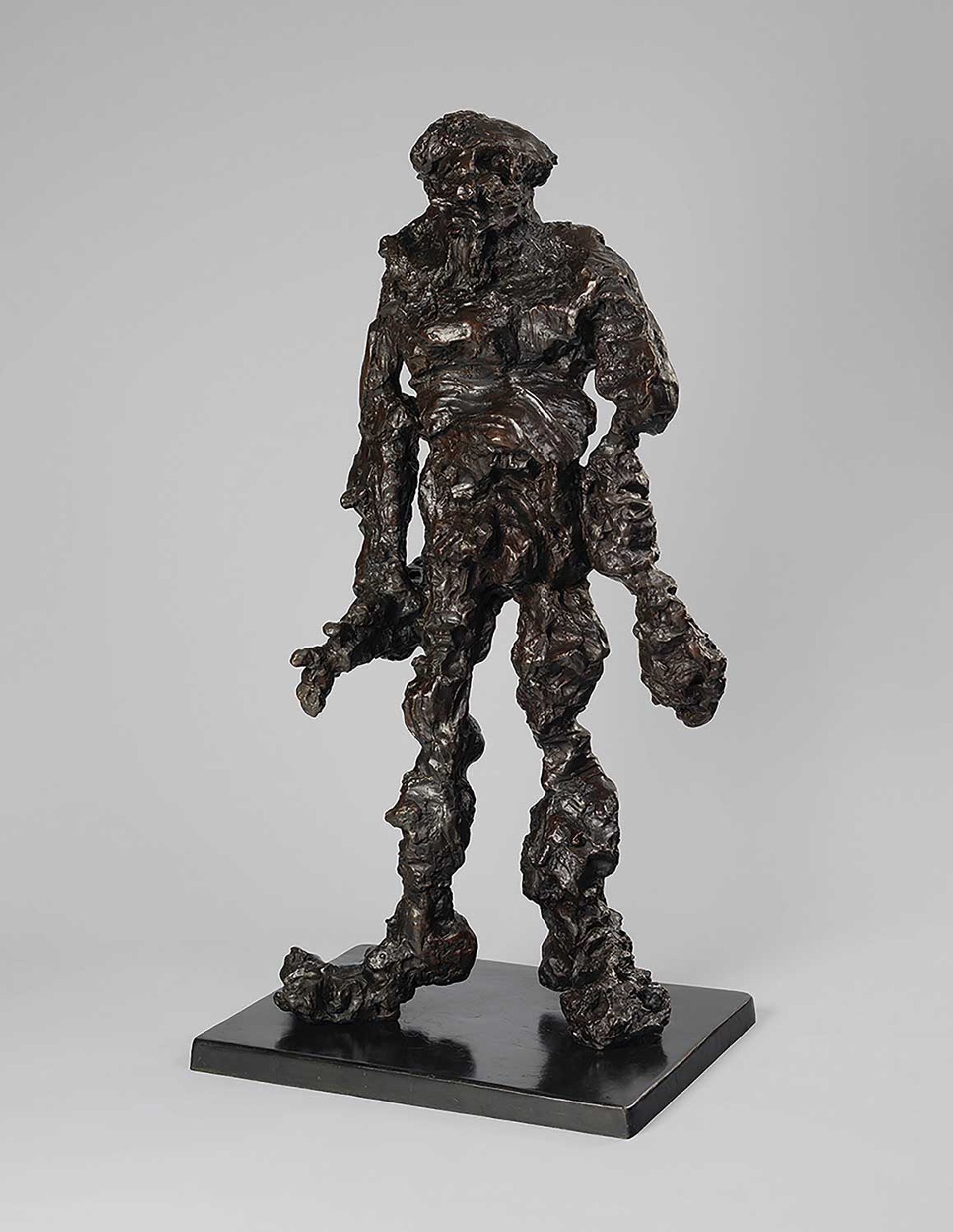Willem de Kooning’s two visits to Italy, in 1959-60 and 1969, had a hitherto underexplored impact on his art. Both inspired intense creativity and somewhat unexpected results in painting and sculpture. But the Academy Museum’s Biennale blockbuster, Willem de Kooning and Italyrepresents not only these works but also his activities over the past thirty years.
His first stop in Italy, in September 1959, was brief: a few days in Venice, then a few hours in Rome before returning to the United States. “Gregory Corso, American Beat poet [De Kooning] “We met in Venice and quickly took him around Rome to see some of the sights,” said exhibition co-curator Gary Garrels. As Garrels puts it, “Time in Rome It’s obviously powerful.” Four weeks later, de Kooning returned. He stayed four months.
He keeps reinventing himself, rethinking, and returning.He was never held back by what he had done before
He subsequently achieved acclaim and success. The Venice exhibition began with paintings from his May 1959 exhibition at the Sidney Janis Gallery. Bolton Landing (1957) and Vehicle diversion (1958) have been called “Park Avenue Views”—their bold forms, slabs, and swirling colors suggest the vast vistas de Kooning saw on the road from New York to his adopted home in Long Island Springs. Garrels said they were “a major break from previous work in 1955-56”.
free experimentation
During his long stay in Rome, de Kooning borrowed a studio from the Italian artist Afro Basaldella, whom he had met in New York. The studio was small, with little or no natural light, and the work he created was “very different from the Parkway paintings”: black and white, Garrels said.now known as RomeHowever, they are far from modest. Garrels said de Kooning worked in ink and “also added ground pumice to it, which I thought was interesting, in Italy, using this material.” “It was a time and a place that gave him the freedom to try something new, something different, to experiment.” He would work on both sides of the paper, tearing them, folding them, and joining them together.

De Kooning painting from 1975 Seagulls carry the screams of children (Untitled XX) Curator Gary Garrels describes a period in his career as “an explosion of grandiose abstraction”
© Willem de Kooning Foundation/Artists Rights Society, New York
Crucially, as Garrels says, Rome “It affected him when he came back to New York to do something different.”Three examples of post-Italian painting, known as Pastoral scenery— Same dimensions, painted 1960 — Exhibited at the Academy: a tree in naples, villa Borghese and door to river. Two of the works clearly pay homage to specific sites in Italy, but Mario Codognato, Garrels’ co-curator, noted in his catalog essay for the exhibition that the Roman paintings’ The influence can also be seen, “Broad brushstrokes create unexpected truncation, interference and new forms of superposition”. Garrels suggested, Pastoral scenery The artistic conception of the painting is also unique. “They are more romantic. They are more lush. They are more holistic. They are softer. They are “immersed in a place with a different rhythm of life, in the wonderful gardens and parks of Italy”, “perhaps stimulated, perhaps Inspired.”
return to image
Garrels explains that de Kooning’s career is often seen as a series of ruptures and ruptures, and some of the great paintings of female figures in the 1960s include woman, sag harbor (1964), from the Hirshhorn Museum and Sculpture Garden in Washington, D.C., reflects his return to figurative but bold and broad colors in the landscape that preceded it. But they also set the stage for another rupture: the sculptures he created after a visit to Italy in 1969.
It all started with an invitation to attend the Music Festival in Spoleto, Province of Perugia, but the most important moment occurred during one of de Kooning’s regular visits to Rome, where he accidentally met the sculptor Herzl Emanuel Er, whom he met when he was a young artist in Rome. He now runs a bronze foundry in Trastevere.
Garrels said de Kooning’s clay figures were “exciting – they were very majestic, very powerful”. But they were also “overlooked”, he said, “because they were side chapters to an overall career that was essentially that of a painter and a draftsman”. But, he argued, “these sculptures allowed him to complete an interest in the human figure that had begun in the 1960s; the last figurative paintings were in 1972 and the last sculptures must have been in 1974. In turn, they led to It represents the “explosion of grand abstraction” before painting in the late 1970s and 1980s.

clam digger (1972); de Kooning discovered sculpture after his
Visited Spoleto in 1969
© Willem de Kooning Foundation/Artists Rights Society, New York
Garrels and Codognato link de Kooning’s final paintings to the Italian Baroque, especially Gian Lorenzo Bernini, who, as Garrels puts it, “was prevalent in Rome.” exist”. “He was everywhere and everywhere.” Although the 1980s paintings don’t overtly reference Bernini, Garrels said “things seep in and seep up” in de Kooning’s paintings, while The “swooping, swirling lines and voluptuous volumes” of de Kooning’s final period suggest de Kooning’s “defiance of gravity.” Bernini in the work of Borghese, and de Kooning’s unforgettable assertion: “If I have ever seen Minimalism, this is it.
The non-linear development of the second half of de Kooning’s career is evident in the Venice exhibition, which overall demonstrates “why this work remains so open to the public more than 60 years ago,” Garrels said. “He was constantly reinventing himself, rethinking, constantly coming back. He was never haunted by what he had done before. His trip to Italy was crucial to this constant ebb and flow.
• Willem de Kooning and Italy, Accademia Gallery, Campo della Carità 1050, April 17 to September 15

